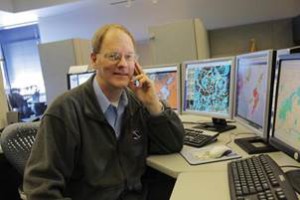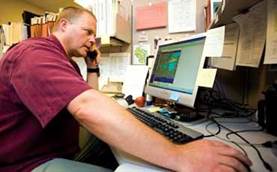
Gary Cannalte – Dark Skies Severe Weather Seminar Master of Ceremonies
- Chief Meteorologist from August, 1999 to present. Morning meteorologist from September, 1990 to August, 1999. On-air television Meteorologist for 5, 6, 9, and 10 PM newscasts.
- Provide live and recorded weekday morning and afternoon weather forecasts for radio stations WMGN, WWQM, and WTDY in Madison, WI, WCLO and WJVL in Janesville, WI, WGLR-AM/FM in Lancaster, WI and WPVL-AM/FM in Platteville, WI.
- Provide daily forecast updates and weather content for Channel 3000 web site (www.channel3000.com).
- Present weather educational talks for schools and severe weather seminars for businesses and the general public.

Bill Eberle, Personal Lines Product Research Senior Specialist, American Family Insurance
- New home construction. Homeowner’s insurance policy, getting your home fixed/replaced after a disaster.

Gabriel A. Garriga, U.S. Dept. of Homeland Security/FEMA RV
- National Preparedness Division FEMA Region V

Rusty Kapela – Scary Looking Clouds
- Retired National Weather Service Meteorologist.
- 40 years in the weather business — over 36 at the National Weather Service.
- Before joining the National Weather Service in 1977, he lived and worked in Antarctica for three months — the geographic South Pole, where he arrived to find the temperature at minus 50.

Rick Kohrs
University of Wisconsin Space Science & Engineering Center (SSEC) University of Wisconsin Cooperative Institute of Meteorological Satellite Studies (CIMSS) programmer and graphic artist at the University of Wisconsin–Madison Space Science and Engineering Center. Using a software package called McIDAS and other software, Rick creates real-time global graphics and data visualization products for 3D spherical display systems.
For two decades, the University of Wisconsin Space Science and Engineering Center (SSEC) and the Antarctic Meteorological Research Center (AMRC) have been creating global, regional and hemispheric satellite composites. These composites have proven useful in research, operational forecasting, commercial applications and educational outreach. Using the Man computer Interactive Data System (McIDAS) software developed at SSEC, infrared window composites were created by combining Geostationary Operational Environmental Satellite (GOES), and polar orbiting data from the SSEC Data Center and polar data acquired at McMurdo and Palmer stations, Antarctica. Increased computer processing speed has allowed for more advanced algorithms to address the decision making process for co-located pixels. The algorithms have evolved from a simplistic maximum brightness temperature to those that account for distance from the sub-satellite point, parallax displacement, pixel time and resolution. The composites are the state-of-the-art means for merging/mosaicking satellite imagery.
-
Kelly Maddern
Ms. Maddern will present her personal account of the July 18, 1996 Oakfield WI F5 Tornado.

John McLellan, Dane County Emergency Management – Preparedness
His career has been associated with emergency response (from the fire hose to writing standard operating procedures to strategic and long range planning for emergency and municipal agencies), specializing in the development and testing of organizational policy and procedures. Current career with Dane County’s Department of Emergency Management allows the opportunity to interact with a diverse and ever expanding group of government, non-profit, and for-profit professionals. This is the most attractive part of the job. The outcome from our interaction can come in many forms: from a one-time conversation to develop a general understanding of what “preparedness” is for an organization to the multi-year development of emergency procedures including evaluation and improvement mapping to ongoing participation on select emergency preparedness / organizational response committees.

Dr. Leigh Orf – Observing and Modeling Supercell Thunderstorms and Tornadoes
- Associate Scientist, Cooperative Institute for Meteorological Satellite Systems (CIMSS).
- His research focuses on severe weather, including supercell thunderstorms, tornadoes, & downburst
- He is especially interested in obtaining new insight into the atmosphere by efficiently utilizing high-performance computing (HPC) resources, such as the Blue Waters supercomputer.
- His past presentations have included the International Computing for the Atmospheric Sciences Symposium, Sept. 15, 2015, Annecy, France – Valparaiso University 13th Annual Great Lakes Meteorology Conference & the 19th annual Severe Storms & Doppler Radar Conference.

National Weather Service – NWS Spotter Class
- Sullivan WI, MKX